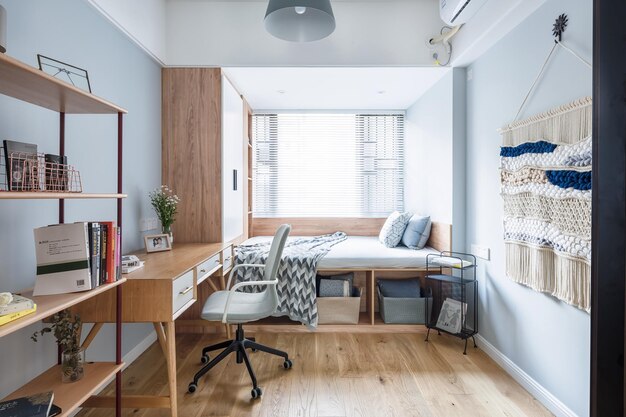Unlocking the Potential of 529 Plans: Can They Cover Room and Board?
Saving for college can feel daunting, but 529 plans offer a tax-advantaged way to ease this burden. While they're primarily known for covering tuition, many wonder if they extend to room and board expenses. In this comprehensive guide, we'll explore whether you can use 529 funds for room and board, and delve into related aspects to ensure you maximize the benefits of your 529 plan.
Understanding 529 Plans: A Brief Overview
Before diving into specifics, let's clarify what a 529 plan is. Named after Section 529 of the Internal Revenue Code, these savings accounts offer significant tax advantages for educational expenses. There are two types:
1. Prepaid Tuition Plans: These allow you to purchase tuition credits at today's rates, hedging against future cost increases.
2. Education Savings Plans (ESP): These are investment accounts that grow tax-free, with withdrawals that are tax-free when used for qualified education expenses.
With this foundation in mind, let's investigate one of the most pressing questions: Can 529 plans be utilized for room and board?
Using 529 Funds for Room and Board
The Basics: Qualified Education Expenses
529 plans cover qualified education expenses - a term essential to grasp. These include tuition, fees, books, and supplies, but crucially, they also extend to room and board under certain conditions.
Enrollment Status Matters: To use 529 funds for room and board, students typically must be enrolled at least half-time, as defined by their educational institution.
On-Campus vs. Off-Campus Housing: Costs are typically limited to either the actual amount charged for on-campus housing or a greater figure determined by the college's cost of attendance for off-campus housing.
On-Campus Housing
When living on-campus, utilizing 529 funds is straightforward. The cost of room and board can fully qualify as long as it forms part of the college's published cost of attendance.
Off-Campus Housing
Using 529 funds for off-campus housing introduces more complexities:
Check the college's published cost of attendance for room and board. This serves as a cap on what can be taken from a 529 plan for off-campus housing.
Receipts and Documentation: Keep detailed records. You'll want receipts for rent, utilities, and other essential expenses to ensure compliance with 529 rules.
Special Considerations for Room and Board
Choosing Between On-Campus and Off-Campus Housing
When selecting housing options, consider these factors:
Cost Differences: Off-campus rent could be lower than on-campus fees, but additional expenses like utilities must be considered.
Convenience and Lifestyle: Weigh the convenience and lifestyle benefits of being on campus against the independence and potential cost savings of off-campus living.
Summer Housing
529 plans can cover summer housing costs, provided the student remains enrolled at least half-time.
Study Abroad Programs
For those partaking in study abroad programs approved by their institutions, 529 plans can cover room and board costs, expanding the plan's versatility.
Strategically Maximizing 529 Funds
Knowing how to use 529 funds efficiently can significantly ease financial strain. Here are some tips:
Plan Withdrawals: Align 529 withdrawals with academic calendars to avoid excess funds sitting idle. This helps in maintaining proper cash flow and reduces the temptation to use funds for non-qualified expenses.
Prioritize Qualified Expenses: Safeguard 529 resources by first covering tuition and mandatory fees, considering room and board, then accounting for other eligible expenses.
Common Missteps and How to Avoid Them
Overlapping Payments
Be wary of paying for the same expenses twice, such as covering rent with 529 funds but also claiming it on tax benefits like the American Opportunity Tax Credit. This can trigger taxes and penalties.
Retain All Documentation
Meticulously retain receipts and keep records to validate your 529 plan withdrawals should questions arise. This cannot be overstressed. Audits can happen!
Understanding Penalties
Misuse of 529 funds results in taxes and penalties. Knowing what qualifies helps avoid unnecessary financial burdens.
Pros and Cons of Using 529 Plans for Room and Board
Benefits
Tax Efficiency: Withdrawn funds used for qualified expenses are tax-free.
Flexibility: The ability to cover both living and education expenses provides financial agility.
Drawbacks
Caps and Limits: The college's room and board allowance may be lower than actual costs, limiting utility.
Usage Complexity: Missteps can lead to penalties, emphasizing the importance of adherence to rules.
Key Takeaways on 529 Plans and Room & Board
Here's a concise summary of critical points to remember when considering 529 funds for room and board.
🎓 Minimum Enrollment: Full 529 benefits require at least half-time enrollment.
🏠 Housing Types: Both on-campus and some off-campus living expenses qualify.
🔍 Keep Records: Meticulously document all room and board expenses.
📆 Strategize Withdrawals: Align withdrawals with academic terms for financial efficacy.
👩🎓 Study Abroad?: 529s can cover international housing if part of an approved program.
Room and Board FAQs
Can 529 Plans Cover Food Expenses?
Yes, food is part of room and board, making it a qualified expense.
Are Utility Bills Considered a Qualified Expense?
For off-campus housing, basic utilities can be included if they stay within the school's off-campus cost of attendance limit.
What Happens to 529 Funds if My Housing Costs Don't Meet the Limit?
Excess funds from a 529 plan can remain in the account for future educational expenses like graduate studies or even be transferred to a sibling.
Making sound financial decisions involves understanding your resources thoroughly. By tapping 529 plans for their full potential, including room and board expenses, you can better manage educational costs while building a brighter future free from excessive debt. Take control with knowledge and strategy, and explore all your 529 plan has to offer.
